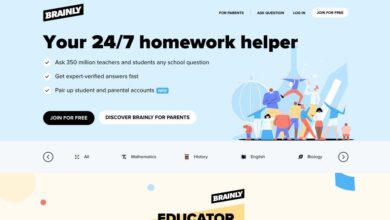Exploring Canvas Alpine: The Ultimate Guide

Introduction to Canvas Alpine
Canvas Alpine is an innovative framework that integrates the power of web technologies to enhance user interface (UI) development. It offers developers a dynamic environment for creating visually appealing and interactive designs on the web. This framework is particularly relevant in the context of modern web design, where performance and user experience are paramount. By leveraging Canvas Alpine, designers can craft responsive and engaging web applications that cater to a diverse range of user needs.
At its core, Canvas Alpine is built upon HTML5 and advanced JavaScript capabilities, allowing for seamless integration with existing web projects. One of its standout features is the ability to handle complex graphics and animations, making it an excellent choice for projects that require a high level of visual fidelity. Additionally, Canvas Alpine provides a robust set of tools that simplify the process of designing user interfaces, enabling developers to focus on creativity rather than getting bogged down in technical challenges.
Moreover, Canvas Alpine supports a variety of design patterns and methodologies, making it adaptable to different project requirements. Whether one is developing a simple website or a comprehensive web application, this framework facilitates a streamlined design process that can significantly improve time-to-market. With its emphasis on modularity, developers can easily implement reusable components that enhance both efficiency and consistency across their projects.
The benefits of Canvas Alpine extend beyond just design; it also plays a vital role in optimizing performance. As web applications become increasingly complex, the need for efficient rendering and minimal load times has never been more critical. Canvas Alpine addresses these challenges by providing optimized rendering techniques that ensure smooth interactions and graphical displays, thus enhancing overall user satisfaction.
Key Features of Canvas Alpine
Canvas Alpine has gained significant attention in the development community due to its innovative and effective features. One of its most notable attributes is its lightweight framework, which allows developers to create robust applications without the overhead that often accompanies more cumbersome libraries. This streamlined approach ensures that projects are not only efficient but also maintain a high level of performance, making it ideal for both small and large-scale applications.
Another essential feature of Canvas Alpine is its ease of use. The framework is designed with developers in mind, providing a straightforward API that simplifies the coding process. This user-friendly nature means that developers can quickly grasp the fundamentals of Canvas Alpine and begin implementing solutions without extensive learning curves or complicated setups. As a result, developers can focus more on creativity and functionality rather than being bogged down by technical intricacies.
Integration capabilities are also a standout feature of Canvas Alpine. The framework is built to work seamlessly with other popular libraries and frameworks, enhancing its versatility. Whether it’s incorporating Canvas Alpine into an existing project or using it alongside other tools, developers can enjoy a cohesive development experience. This compatibility extends to a range of technologies, allowing for the integration of various functionalities that can elevate an application’s performance.
Furthermore, the community surrounding Canvas Alpine is thriving. This active ecosystem not only provides extensive resources for beginners but also shares best practices and innovative uses among experienced developers. Such a community fosters continual improvement of the framework and empowers developers to maximize the potential of their applications. Overall, the lightweight framework, ease of use, and excellent integration capabilities make Canvas Alpine a compelling choice for developers seeking to build engaging and dynamic applications efficiently.
Setting Up Canvas Alpine
To effectively utilize Canvas Alpine in your project, it is essential to follow a structured setup process. This section outlines the necessary prerequisites, installation procedures, and basic configurations for optimal use of this versatile framework.
First, ensure that your development environment meets the required prerequisites. Canvas Alpine requires a modern web browser and a suitable text editor or Integrated Development Environment (IDE). Familiarity with HTML, CSS, and JavaScript will significantly enhance your experience while working with Canvas Alpine, as these are fundamental to creating rich and interactive content.
Next, initiate the installation of Canvas Alpine. The preferred method is through a package manager like npm, which simplifies the process of downloading and managing dependencies. To install Canvas Alpine, navigate to your project directory in the terminal, and execute the following command: npm install canvas-alpine. This command fetches the latest version of Canvas Alpine and integrates it into your project structure without complications.
After installation, it is crucial to include the Canvas Alpine scripts in your HTML file. Ensure to place the following tag within the <head> or <body> section of your HTML document: <script src="node_modules/canvas-alpine/dist/canvas-alpine.min.js"></script>. This step allows you to access all functionalities provided by Canvas Alpine seamlessly.
Once the library is included, basic configuration can begin. To get started, initialize the canvas by selecting an appropriate canvas element from your HTML document. Utilize the following example for initialization: const canvas = new CanvasAlpine('#myCanvas');. This process activates the Canvas Alpine functionality, enabling you to create stunning visual content effectively.
Building Your First Canvas Alpine Application
Creating your first application using Canvas Alpine can be an exciting endeavor as it allows developers to leverage its powerful and flexible framework. To begin, you need to have a basic setup ready, which includes a code editor and the necessary libraries. First, download and incorporate the Canvas Alpine library into your project directory to ensure all features are accessible. Once the installation is complete, you can start building a simple user interface.
Start by creating an HTML file, where you will define the structure of your application using basic HTML elements. For instance, you could create a simple canvas area where graphics and interactive elements will be displayed. Use the <canvas> tag to declare your canvas area and set its dimensions, ensuring it is tailored to the needs of your application. Next, integrate the core functionalities of Canvas Alpine by referencing its documentation, which provides examples and guidelines on how to harness its capabilities effectively.
Once the basic structure is established, you can incorporate different UI elements such as buttons, sliders, and panels. For each element, you will utilize specific Canvas Alpine functions designed to handle events and actions. Binding these actions effectively allows for a dynamic user experience, making the application interactive and user-friendly.
Debugging is an integral part of the development process. As you build your application, you may encounter common issues such as element rendering problems or event handling errors. Utilizing the browser’s console can aid in pinpointing these issues. Furthermore, referring to community forums and the Canvas Alpine documentation can provide solutions and insights. Through a systematic approach, you will be able to resolve these challenges and enhance the functionality of your application.
With persistence and creativity, building your first Canvas Alpine application can lead to the development of sophisticated projects. This foundational skill will open the door to exploring more complex functionalities and designs in future applications.
Integrating Canvas Alpine with Other Frameworks
Canvas Alpine is a versatile tool that enables developers to create dynamic and interactive web applications. Integrating Canvas Alpine with popular frameworks such as React, Vue, and Angular can enhance the overall development experience by combining the benefits of both the canvas-based interface and the robust architecture offered by these frameworks.
When integrating Canvas Alpine with React, it’s essential to utilize React’s component lifecycle to manage the rendering of Canvas elements. Developers can create a dedicated Canvas component that initializes and draws on the canvas within the component’s lifecycle methods, such as componentDidMount. This approach ensures that the Canvas is rendered after the DOM is loaded, allowing for more efficient updates and manipulations of canvas elements based on state changes.
For Vue.js users, the integration process follows a similar pattern. Vue’s reactivity system can be leveraged to bind data properties to canvas elements effectively. By utilizing the mounted lifecycle hook to set up the canvas context and implement drawing logic, developers can create live updates that respond to changes in Vue’s data properties. This integration provides an intuitive way to handle animations and interactive graphics within the Vue ecosystem.
In the case of Angular, developers can utilize directives to encapsulate Canvas Alpine functionality. By creating a custom directive, developers can gain access to the canvas context and implement drawing functions within the Angular framework seamlessly. Angular’s data-binding features can also facilitate updates to the canvas based on component inputs, enhancing the interactivity of applications built with Canvas Alpine.
Overall, integrating Canvas Alpine with frameworks like React, Vue, and Angular allows developers to harness the unique capabilities of each while creating responsive and visually appealing applications. Leveraging these frameworks while utilizing the canvas provides a powerful combination that caters to the diverse needs of modern web development.
Best Practices for Using Canvas Alpine
When working with Canvas Alpine to develop applications, it is crucial to adopt best practices that enhance performance and maintainability. One of the foremost considerations is performance optimization. This entails minimizing the load time and improving the responsiveness of your application. One effective strategy for achieving this is by reducing the size of your assets, such as images, scripts, and stylesheets. Using vector graphics where possible can also contribute to superior load performance, particularly when building user interfaces with Canvas Alpine.
Another essential practice is to implement clean code principles throughout your development process. This means writing modular code that is easy to understand and follow, thereby facilitating future updates and modifications. By organizing your code logically and adhering to consistent naming conventions, you can enhance readability. Additionally, leveraging comments judiciously in your codebase can provide clarity on functionality and make it easier for other developers to collaborate on your project using Canvas Alpine.
Moreover, effective resource management is vital in ensuring scalability of applications built with Canvas Alpine. This can be achieved by employing strategies such as loading resources asynchronously and prioritizing critical resources. Utilizing caching mechanisms can further reduce load times by storing frequently accessed data. Such resource optimization not only enhances user experience but also increases the overall efficiency of the application.
Collaboration tools and version control systems should also be part of your workflow. They ensure that team members can work concurrently without causing conflicts in the codebase, thus fostering a more organized development environment. By adhering to these best practices, developers can create robust applications with Canvas Alpine that are both efficient and maintainable.
Troubleshooting Common Issues with Canvas Alpine
Utilizing Canvas Alpine can be a rewarding experience for developers aiming to create dynamic web applications. However, like any platform, it may present challenges that necessitate effective troubleshooting strategies. One common issue encountered is layout problems. These often arise when elements fail to align properly or when the responsible CSS styles do not render as intended. To address this, developers should review their CSS configurations ensuring that the layout grid or flexbox properties are applied correctly to the relevant components. Additionally, checking for any conflicting styles in external CSS libraries can help mitigate these issues.

Another frequent challenge involves integration errors. Developers may encounter scenarios where Canvas Alpine struggles to communicate with other frameworks or libraries, resulting in unexpected behaviors. In these instances, it is advisable to verify version compatibility between Canvas Alpine and other dependencies. Utilizing the browser’s developer tools can also facilitate debugging by allowing developers to inspect console messages that may hint at what might be going wrong in the integration process.
Performance hiccups can detract from the user experience, especially in a fast-paced web environment. These issues commonly surface when running animations or handling complex data manipulations within Canvas Alpine. To enhance performance, developers should conduct a thorough examination of their scripts, looking for inefficient coding practices such as excessive DOM manipulations or unnecessary re-renders. Leveraging best practices, such as debouncing events or minimizing the use of heavy computations within render cycles, can significantly bolster performance.
By addressing these common problems with practical solutions, developers can maximize the capabilities of Canvas Alpine, ensuring a smoother and more efficient development process. Keeping a proactive approach to troubleshooting will enhance not only the functionality of individual projects but also the overall satisfaction of users interacting with those applications.
Case Studies: Successful Implementations of Canvas Alpine
The Canvas Alpine framework has emerged as a powerful tool across various industries, demonstrating its versatility and effectiveness in real-world applications. A notable implementation can be observed in the educational sector, where Canvas Alpine was utilized by a progressive university to redesign its curriculum delivery. The integration of the framework allowed educators to create dynamic, interactive courses that enhanced student engagement and overall learning outcomes. By leveraging Canvas Alpine’s intuitive design capabilities, faculty members were able to provide a more immersive educational experience, resulting in improved student satisfaction rates.
In the corporate environment, a leading technology firm adopted Canvas Alpine for its project management processes. The company faced challenges with collaboration among cross-functional teams; however, the implementation of Canvas Alpine facilitated a structured approach to project workflows. This innovative solution enabled seamless communication and real-time updates, which contributed to a significant increase in project efficiency. As a result, the organization not only met critical deadlines but also fostered a culture of transparency across departments.
Another compelling example comes from the healthcare industry, where Canvas Alpine was employed to develop patient care management tools. A healthcare provider implemented the framework to streamline access to patient data and improve the coordination of care among medical professionals. By utilizing Canvas Alpine’s robust data visualization features, clinicians could easily track patient progress and tailor treatment plans accordingly. This resulted in heightened patient outcomes and satisfaction, establishing Canvas Alpine as an essential resource in modern healthcare practices.
These case studies exemplify the transformative impact of Canvas Alpine across diverse sectors. The framework’s capacity to improve engagement, efficiency, and care coordination underscores its effectiveness as a leading solution for organizations seeking innovation and improvement in their processes.
The Future of Canvas Alpine
As we look to the future of Canvas Alpine, it is essential to consider both the anticipated updates and the innovative features expected to emerge in the coming years. Canvas Alpine has garnered attention for its remarkable adaptability, which enables it to keep pace with ever-evolving web technologies. The developers are actively working on enhancements aimed at improving user experience, reliability, and performance. With the rise of new frameworks and programming languages, Canvas Alpine is positioned to integrate these advancements seamlessly.
One of the most exciting prospects for Canvas Alpine is the potential for real-time collaboration. This feature could resonate deeply with developers and educational institutions, enabling multiple users to work together on projects within the same canvas. Such functionality would not only enhance productivity but could also foster community engagement around shared learning experiences.
Furthermore, the community surrounding Canvas Alpine plays a crucial role in its ongoing development. Feedback from users is regularly collected and incorporated into updates, ensuring that the toolkit evolves according to its user base’s needs. The community’s voice can often highlight practical suggestions that pave the way for new features, ultimately aligning Canvas Alpine with the expectations of modern web applications.
In addition to community input, roadmaps for future development emphasize an intention to focus on performance optimization and compatibility across a broader range of devices and browsers. This aligns with contemporary web trends where responsive design across varying screen sizes is paramount. By keeping these priorities in sight, Canvas Alpine is positioned to remain relevant and useful in a fast-paced digital landscape.
As we conclude this exploration of the future potential of Canvas Alpine, it is clear that the toolkit holds significant promise. With its commitment to innovation and community involvement, the future looks bright for developers seeking a reliable and advanced canvas environment.
Also read on www.usalookingbuzz.co.uk




